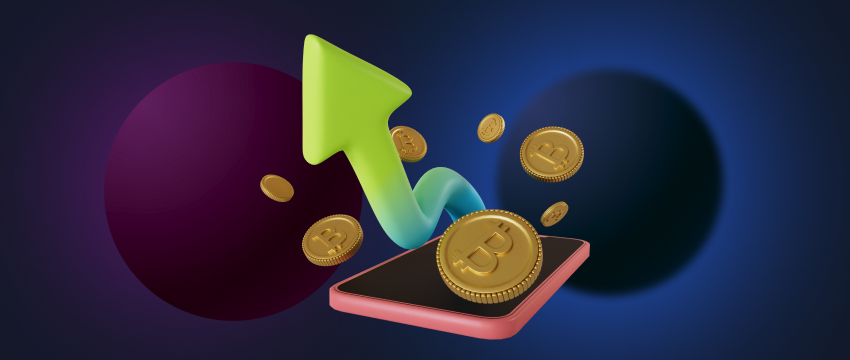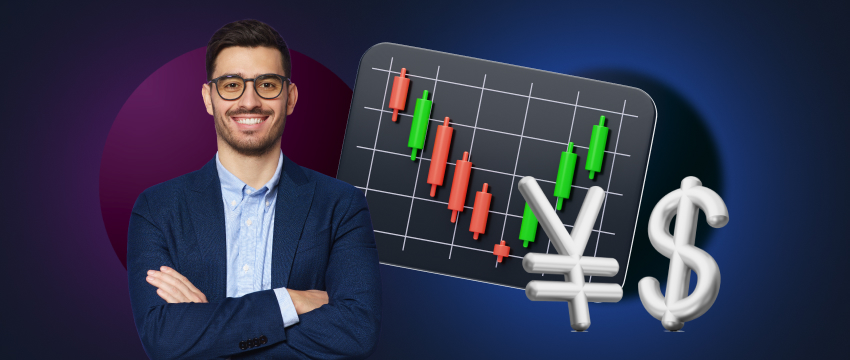The digital currency space has advanced exponentially over the last few years. In fact, there are reportedly more than 23k cryptocurrencies in the world today, with a market capitalization of just over US$1 trillion. In this blog, we’ll explore some of the reasons that make digital currencies so popular. We’ll also take a quick look at 10 of the most popular digital currencies making waves globally.
Five reasons why digital currencies are popular
Cryptocurrencies remain a sought-after digital asset across the globe, with prices rising and falling daily. There are a variety of reasons for this but let’s take a look at the most popular:
- Digital currencies typically offer a quicker and easier way to execute transactions. This is largely due to being decentralized (eliminating the need for intermediaries) and being built on the blockchain.
- Internet connectivity permitting, digital currencies open up the market to people living or working in jurisdictions that lack stable banking infrastructures.
- Cryptocurrencies offer the means to diversify one’s trading portfolio. However, crypto trading is highly volatile so proper risk management is vital to protect your investment.
- Blockchain technology is incredibly secure because of its use of consensus, cryptography, and decentralization. Measures are important to reduce the risk of fraud, identity theft, and hacking.
- Digital currencies also act as a hedge against market volatilities brought about by inflation, currency devaluation, etc.
Now let’s take a look at 10 of the largest digital currencies in the world by market capitalization. We’ll also examine some of the differences and similarities between them.

10 Most Popular Digital Currency Coins
1. Bitcoin
Coming in at the top position and the undoubted leader of the cryptocurrency pack is Bitcoin (BTC).
This virtual currency, introduced to the world in 2009, has since become one of the most well-known digital currencies globally. It is created, distributed, traded, and stored on the blockchain and can be purchased through different cryptocurrency exchanges.
BTC is the largest digital currency worldwide as far as market cap is concerned, coming in at approximately US$1 trillion.
2. Ether
In second place is Ether (ETH), the native cryptocurrency of Ethereum, a decentralized community-run network of computers. The market cap is currently at just over US$190 billion, with a circulating supply of 120,232,366 ETH coins.
Vitalik Buterin and Joe Lubin, founders of blockchain software company ConsenSys, launched the Ethereum platform in 2015. Ethereum was not created to be a secure, peer-to-peer decentralized payment system, offering an alternative to traditional currency, as Bitcoin was. Instead, its primary purpose was to facilitate contracts and applications, thereby monetizing the operations of the platform, rather than an alternative currency. However, this is largely what it has become.
3. Tether
Tether is the 3rd largest cryptocurrency in the world by market cap (US$83+ billion). It belongs to a category of cryptocurrencies called stablecoins which come with one primary purpose – price stability. This is typically achieved by tying the value of the digital currency to the price of a traditional currency, e.g. US$. Tether (USDT) also makes the claim that it is backed 100% by Tether reserves.
The cryptocurrency has not been without controversy, however. In 2017, it reported an electronic theft of US$31 million in USD tokens. Further, Tether’s parent company has paid fines to the tune of US$61 million to settle two regulatory probes into the mishandling and misrepresentation of its reserves.
4. Binance coin
A market cap of over US$32 billion makes Binance coin (BNB) the 4th largest cryptocurrency globally today. BNB powers the BNB Chain ecosystem and has many use cases within this ecosystem and outside of it. BNB is used to purchase goods and services, create smart contracts, for lending, for rewards, and even to pay transaction fees.

5. XRP
Ripple Lab’s cryptocurrency and token, XRP is used to facilitate transactions on the network. Founded in 2011, this digital currency, the 5th largest in the world, has a total supply of 1 billion tokens. It is said to be more cost-effective than Bitcoin, with quicker transaction speeds too. Ripple is a centralized fintech company that seeks to advance a faster, simpler, and safer way to make transactions globally. XRP’s market cap today stands at more than US$26 billion.
6. USDC
Like Tether, USDC is a stablecoin. US dollars, US dollar-denominated assets (e.g., US Treasury securities), or euros back the cryptocurrency to maintain price stability.
The USDC maintains a 1:1 peg with the US$. This digital currency is compatible with a variety of blockchains, including Ethereum, Solana, TRON, and others. The market cap of USDC today stands at US$25.6 billion.
7. Cardano
Cardano is a decentralized proof-of-stake blockchain and its cryptocurrency is called ADA, after the Countess of Lovelace Augusta Ada King. Founded in 2015 and launched in 2017, the system was positioned as a third-generation alternative to 2nd generation Ethereum. However, both platforms offer similar applications, e.g. smart contracts. Today, this 7th largest cryptocurrency has a market capitalization of over US$8 billion.
8. Dogecoin
Dogecoin (DOGE) is a peer-to-peer open-source cryptocurrency launched in December 2013. It is probably most renowned for its logo which is that of a Shiba Inu, a Japanese breed of dog. It uses the same proof-of-work technology like Litecoin. Dogecoin is the 8th largest cryptocurrency by market capitalisation which today sits at approximately US$8.5 billion.
9. Solana
Solana is a decentralised blockchain and its native coin SOL facilitates activities on the platform. Crypto coin, Solana is said to rival Ethereum in terms of more transactions per second and lower transaction fees. The two cryptocurrencies do however share some similarities like smart contract capabilities and the use of a proof-of-stake consensus mechanism. This 9th largest cryptocurrency has a current market capitalization of just under US$8 billion.
10. TRON
TRON is another decentralized digital platform using features of the blockchain, with its own cryptocurrency called Tronix or TRX. It was founded by the now CEO of the Tron Foundation, Justin Sun in 2017 with the purpose of hosting a worldwide entertainment system for a cost-efficient way of sharing digital content. As of August 2023, TRON is said to have approximately 180 million accounts. Users of the platform use TRX to pay content creators directly in order to access their applications. TRX transactions are free and content creators are not required to pay transaction fees.

Trading crypto CFDs (Contracts for Difference)
CFD trading is very popular among global traders, particularly for those looking to engage with multiple markets. Traders are increasingly opting for crypto CFDs as well. CFDs are contracts for difference whereby traders can trade different underlying assets without owning them, and also without the need for a crypto wallet or account. Instead, traders speculate on the direction that the price of the underlying asset will move, in this case, the cryptocurrency, and then make a trading decision. In other words, the trader will either go long or short, depending on their speculation.
CFD trading is typically highly liquid, enabling more competitive spreads and quick trade executions. CFDs are also highly leveraged, including crypto CFDs which makes them highly risky if not properly managed. While leverage allows a trader to open larger positions, increasing the potential for higher gains, it is also incredibly volatile, leading to dramatic losses very quickly and totally out of left field.
Penafian: This material is for general informational and educational purposes only and should not be considered investment advice or an investment recommendation. T4Trade is not responsible for any data provided by third parties referenced or hyperlinked in this communication.




